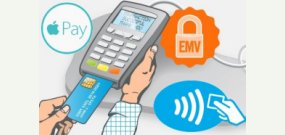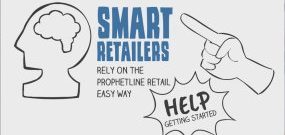– By Jeff Haefner
Here are 15 quick and easy tricks that I’ve noticed other
successful retail businesses doing to keep their customers coming back for more. This works because when you let your customers know that you appreciate them, they’ll show that they appreciate you by purchasing more of your products and will
become a loyal customer, guaranteed.
Some of these tips require retail technology and some don’t.
Here you go:
1. Always say hello. Your sales people, your cashiers, and
all your employees must always say hello.
2. Acknowledge your customers children.
3. Ask your customer their name and use it.
4. Suggest accessories and other items that enhance your
customer’s purchase and their life. If you have a POS system, be sure to enter “suggested add-on items” in your software, so employees get reminders and start remembering on their own.
5. Open the door for customers whenever possible.
6. If you’re busy and the customer is waiting for help,
give them an estimate of how long they’ll have to wait.
7. When a customer says “Thank you”, say “You’re welcome.”
Add “It’s my pleasure” after you say “You’re welcome”.
8. Have the owner personally call a high-ticket customer
and thank them for their purchase. Your POS software should allow you to print off a list of your high-ticket purchases in seconds.
9. Offer to carry your customer’s purchase to the car (even
if it’s small).
10. Send handwritten thank you notes.
11. Send a birthday card with a gift certificate or coupon
for a free product. You can use the CRM portion of your POS software to quickly identify and track customers’ birthdays.
12. Tell the customer why a product isn’t right for them.
This type of honesty will surely create a life-long loyal
customer!!
13. Teach the customer how to use the product they
purchased. Clothing retailers might show their customer how to accessorize their purchase.
14. Make your return policy as easy as possible.
15. If your customer lost their receipt, reprint the
receipt for them on the spot. (This is very quick and easy with the right POS software technology.)
Bottom line, train your employees to do the little things
that improve your
customers’ satisfaction and your sales will increase,
guaranteed.
Now go ahead and make sure you’re consistently doing most (if not all) of the tips above.
– By Jeff Haefner
http://www.possoftwareguide.com




